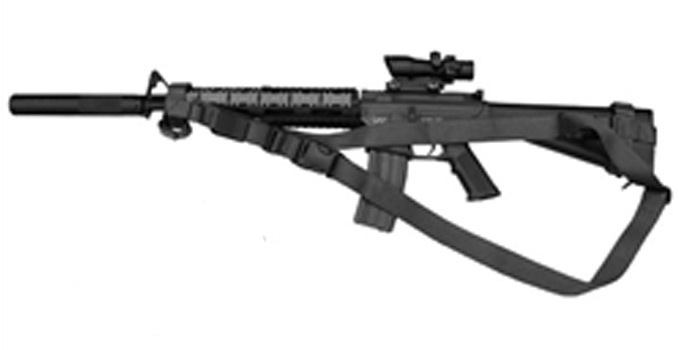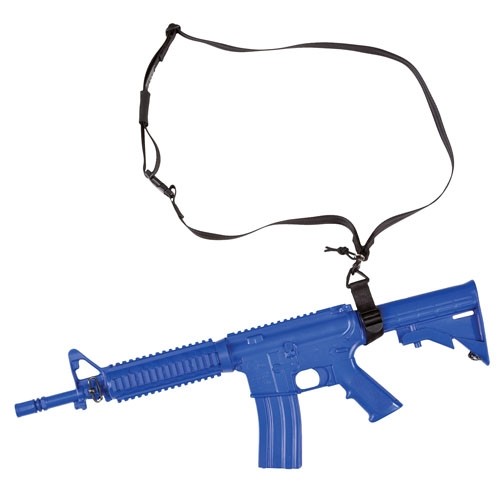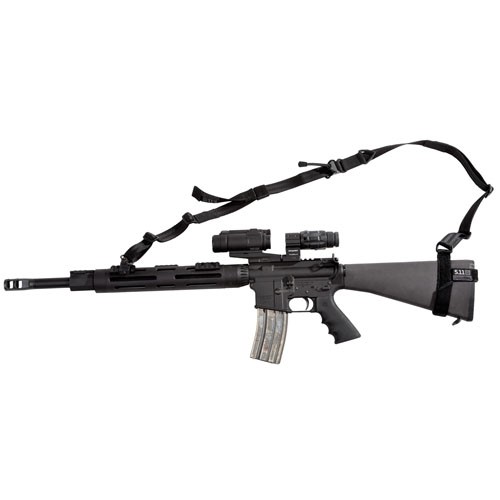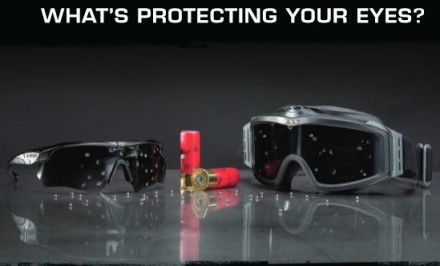We have all been there, that is unless you bought a sling from the get-go, it’s been a long open event or MilSim and carrying the gun in hand just isn’t going to work anymore. Your arms are tired, and you don’t want to leave it laying somewhere while you’re doing other things. How are you going to draw your secondary with your primary in hand and the lack of a sling? So you decide to get a sling. But which one? Today we will cover the 3 main types of slings you will encounter and which one will be best for you. Slings are convenient because it allows you to keep your primary on person while carrying something or doing something that requires your hands to be free.
The first sling we will look at is the one point sling. The one point sling allows for the most freedom with the weapon. Generally the one point sling is attached to the back end of the gun where the stock meets the receiver. It can be adjusted to hang where it is most comfortable for the user, whether it is pulled high to keep it out of the dirt, or if you want the pistol down by where your hand naturally hangs. The one point sling is good for CQB and assault load outs as it allows the primary weapon to be readily available at all times, however it does not secure it in position so it will swing while running if you do not have a hand on it.
The next sling we will look at is the two point sling. The two point sling allows your weapon to hang on the user’s chest or back and secures it very well so it will not swing while moving. The two point also offer the least amount of freedom of movement with the weapon. The two point sling is nice for sniper and DM load outs as it allows the user to maintain positive control of the weapon and to go prone easily, and those roles don’t have to move as often as the CQB and assault roles do.
The third and final sling we are going to look at is the three point sling. This is easily my favorite of all the slings. The three point sling works like a combination of the one point sling and the two point sling. It attaches to the front and back of the gun like the two point sling does however it has an additional strap, so while wearing the three point properly you have a strap across your back and your chest. It provide the freedom of movement by using a clip at the front end that you hit while pulling the gun up to fire that draws the sling back tightening up the sling around the users torso while freeing up the front of the weapon. You can than clip it back together to secure it like a two point sling. The Three point sling is good for assault, DMR and gunner load outs as it also distributes the weight more evenly than the other slings. The three point sling is also the sling I was issued by the Marine Corps for my M4, and, in my opinion, one of the best slings you can get. No matter what sling you get, they will all take some stress of your shoulders and arms and free your hands, to keep the objective going.
Play Fair, Play Hard, Play Fun. -$pades














